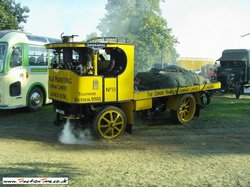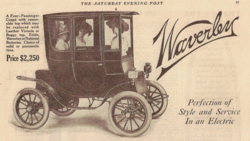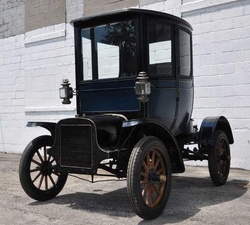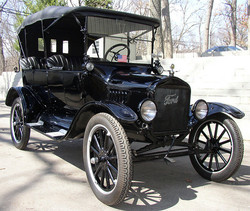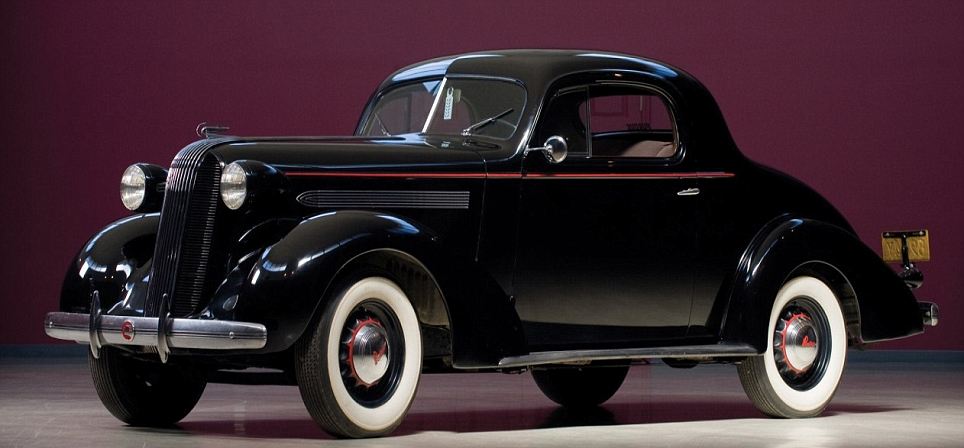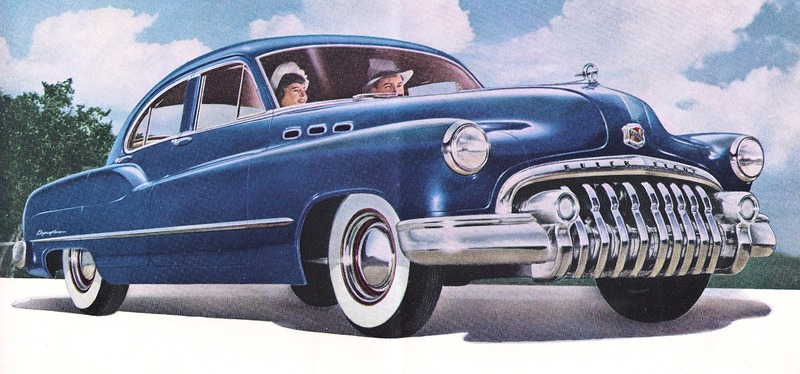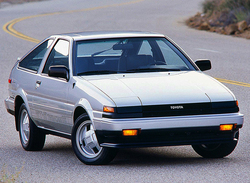The Development from Steam, Electric, and Petrolium Wagons to the Automobile:
A Timeline From The Steam Wagon To The Automobile:
Self powered steam wagons first emerged by the 1870's but were very rare and only in big cities like Chicago and New York. The truck, car, and motorcycle all developed along different pathways. Outside the big cities, it was not till nearly 1910 that self powered vehicles began to be a viable option. In smaller midwestern areas, it wasn't till after the mid teens that powered vehicles became common. The shift was quick and didn't occur earlier because people had to give up their stables to replace horses with trucks and cars. The history of the automobile is so great that I can only make reference to a simple timeline. This section could be five thousand pages long with 10,000 pictures and still be incomplete!
The electric truck below would be from around 1895 to 1910. They were slow, could travel less than 40 to 50 miles per charge, and they required lots of maintenance. They did carry a hefty load and caused delivery time to be divided between "horse" time and "truck" time. Horses took longer to deliver loads, got nervous if they had to stand a long time in one spot, and had to stop to rest and to be fed.
Make sure and check the Cars I and Cars II pages:
The Electric Car:
Electric cars were for city use only. They could not handle the bad roads well and were very slow. Nearly all were steered by a tiller and were generally very expensive. By 1902, electric cars were almost always considered a "woman's" vehicle.
Car from around 1905:
By 1905 almost all cars were petrolium driven. A typical car during this time period cost more than what most people made in several years so were considered a rich man's vehicle. Stables slowly turned into garages and gas stations slowly grew in numbers. Most wealthy car owners had to use a chauffer who dorve and repaired the car.
Ford Model T:
The Ford Model T was built from 1908 to 1927. The "T" grew slowly in sales and as the numbers grew, Ford reduced the price. In the mid 1920's one could be purchased for as little as $260. The Model T became one of the highest volume cars ever produced and at one time represented around half all the cars on the road. The model T truly put America on the rald!
An Automobile from the mid 1930's:
The cars from the 1930's had mostly rounded bodies, had tops (open cars were now in the minority), had many more creature comforts, and were more reliable. These cars were still fragile and few could last even 50,000 miles. People were traveling more than ever before but not long distances.
Cars of the 1950's:
The 1950's were the heyday for the American automobile. America out produced the rest of the world in volume, had more chrome than ever, were big and heavy, and offered more models from inexpensive models to luxury models. The cars of this period were to begin to offer automatic transmissions, air conditioning, power steering, power windows (luxury models only), and many other ammenities which added comfort and prestige.
A 1985 Toyota:
By the end of the 1970's, the American manufacturers were in the retreat. By the late 1950's GM was the largest automobile manufacturer in the world. By the early 1960's GM was loosing hundreds of millions of dollars with priduction numbers plumeting.
For a better picture of how the automobile has changed, go to "Maps II."
For a list of automobile sales figures and US registration figures go to:www.markbayermotorcycles.mysite.com/whats_new.html
